QN80F is the first in the history of Samsung's "eighty range" to feature Mini LED backlighting. And it does it really well. Although the number of dimming zones isn't staggering, the black levels are solid, and in combination with high brightness, it allows for a very decent picture in HDR content. Additionally, there's a 144 Hz panel that provides excellent motion fluidity, and the gaming features – VRR, ALLM, Game Motion Plus – make the QN80F an option truly designed for those gaming on consoles or PCs. The television operates quickly and responsively, and the Tizen system runs like lightning – whether you’re searching for apps or switching sources. Is there anything to nitpick? Of course, as always – there are shortcomings in the system (like USB recording), DTS support is absent, and Mini LED comes with its own limitations. But the QN80F is a fantastic everyday television – versatile, refined, and... with great price potential. Looking at the history of this series, we can expect that this "eighty" will still shake things up once it hits the first reasonable promotions. And then it could be virtually unbeatable at its price – especially if Samsung fixes the minor teething issues.
- Matching (Score)
- Our verdict
- TV appearance
- Where to buy
- Contrast and black detail
- HDR effect quality
- Factory color reproduction
- Color reproduction after calibration
- Smoothness of tonal transitions
- Image scaling and smoothness of tonal transitions
- Blur and motion smoothness
- Console compatibility and gaming features
- Input lag
- Compatibility with PC
- Viewing angles
- TV efficiency during daytime
- Details about the matrix
- TV features
- Apps
- Playing files from USB
- Sound
SAMSUNG QN80F vs Philips OLED770
Direct compare
QN80F
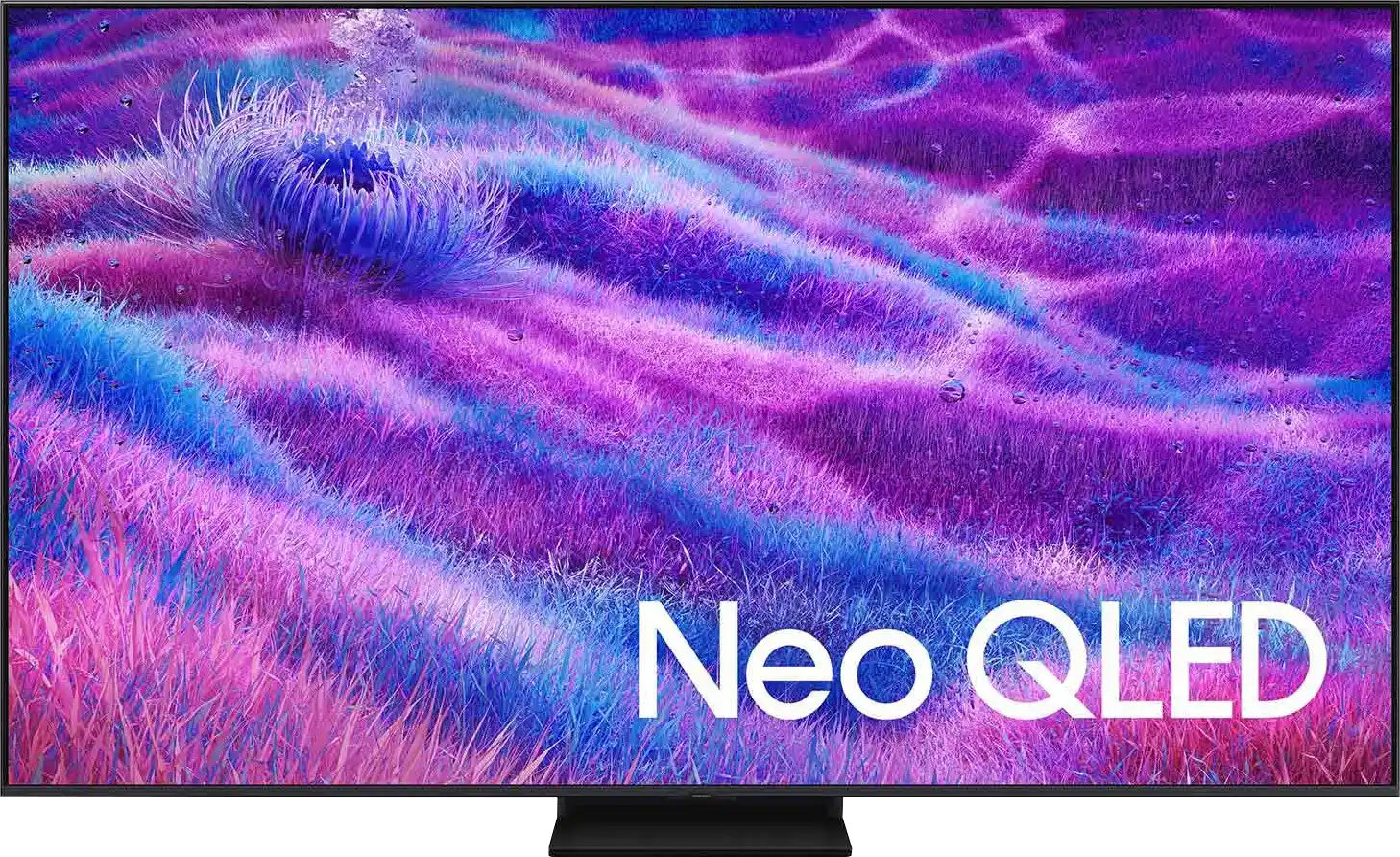

Panel type: LCD VA
Resolution: 3840x2160
System: Tizen
Model year: 2025
Complete the survey to find out the result

Panel type: WRGB OLED
Resolution: 3840x2160
System: Titan OS
Model year: 2025
Complete the survey to find out the result

Overall rating
7.3
7.5
Movies and series in UHD quality
6.9
8.0
Classic TV, YouTube
6.8
8.6
Sports broadcasts (TV and apps)
6.7
8.4
Gaming on console
8.5
9.2
TV as a computer monitor
8.8
7.6
Watching in bright light
6.6
4.8
Utility functions
7.7
5.5
Apps
8.7
6.7
Sound quality
6.7
7.0
Complete the survey to find out what fits your preferences
Advantages
Great black levels and contrast - VA panel combined with MINI-LED backlighting.
Excellent brightness - up to 1000 nits in HDR
Fast and responsive panel - 144 Hz
Robust support for gamers - 4xHDMI 2.1, VRR, ALLM, GameBar, Game Motion Plus
Very good usability in daylight
Advanced Tizen operating system
Easy to use
PiP function
Excellent image quality typical of OLED – perfect blacks, infinite contrast
AmblightTV system
Support for multiple HDR formats including Dolby Vision and HDR10+
Great image quality after calibration
Decent viewing angles
Excellent motion smoothness – 120Hz OLED panel!
Many features for gamers: VRR, ALLM, Dolby Vision Gaming
Low input lag
4 HDMI 2.1 ports!
Disadvantages
No DTS format support – a limitation when connecting a home theatre system
No USB recording function
Relatively few dimming zones
Issues with the HGiG function (for gamers) – the update removed this option*
TitanOS has very few apps and has annoying bugs
The remote works on infrared
Not the best upscaling quality
Average reflection suppression – the screen behaves like a slightly dimmed mirror
Our verdict
Philips OLED770 is a television that stands out primarily for its picture quality – the characteristic perfect black and infinite contrast typical of OLEDs make even a regular evening of binge-watching a series feel like a small cinematic experience. After calibration, the colours gain naturalness and consistency, while details in dark scenes are separated from the lights with surgical precision. This is a screen that gives the feeling of engaging with premium-class technology, even though it is formally a budget OLED in Philips' portfolio. The second pillar on which the OLED770 stands very strong is gaming. Here, the manufacturer has really done their homework. VRR works up to 120 Hz, we have an automatic game mode (ALLM), and input lag in standard HDR10 or SDR modes at 120 Hz can drop to as low as 5 ms – these are results that will easily satisfy even the most demanding gamers. And finally, the Ambilight system – for many it’s a gadget, but during longer sessions, it truly makes a difference. The colourful LEDs behind the screen dynamically respond to what's happening in the game, and can pull you deeper into the virtual world. It’s precisely for this reason that one could risk saying that the OLED770 is one of the more interesting budget gaming TVs on the market.
However, not everything shines so brightly, because when we come to the Smart TV aspect… TitanOS is the biggest drawback of this model. Theoretically, we have everything we need: access to apps, AirPlay support, and voice commands. In practice, though, the list of apps is limited, screen mirroring often doesn’t work at all, and voice search does not support the Polish language. Moreover, the remote, although well-designed and backlit – operates on infrared, which sounds almost anachronistic in 2025. The system is purportedly fast, but it can irritate with errors, and instead of encouraging usage, at times, it rather urges us to turn it off. And here we reach the crux: the OLED770 is a television that performs excellently as a screen for movies and games, but not necessarily as a multimedia hub for the home. For someone who mainly uses a console, home cinema, or operator's decoder – it will be a solid choice. We get fantastic picture quality, a full set of modern gaming features, and of course, the proprietary AmbilightTV backlighting system! But if someone is looking for a television that has to replace everything and serve as a multimedia powerhouse, it would be better to look towards the more expensive Philips models that offer more refined system solutions like GoogleTV.
TV appearance
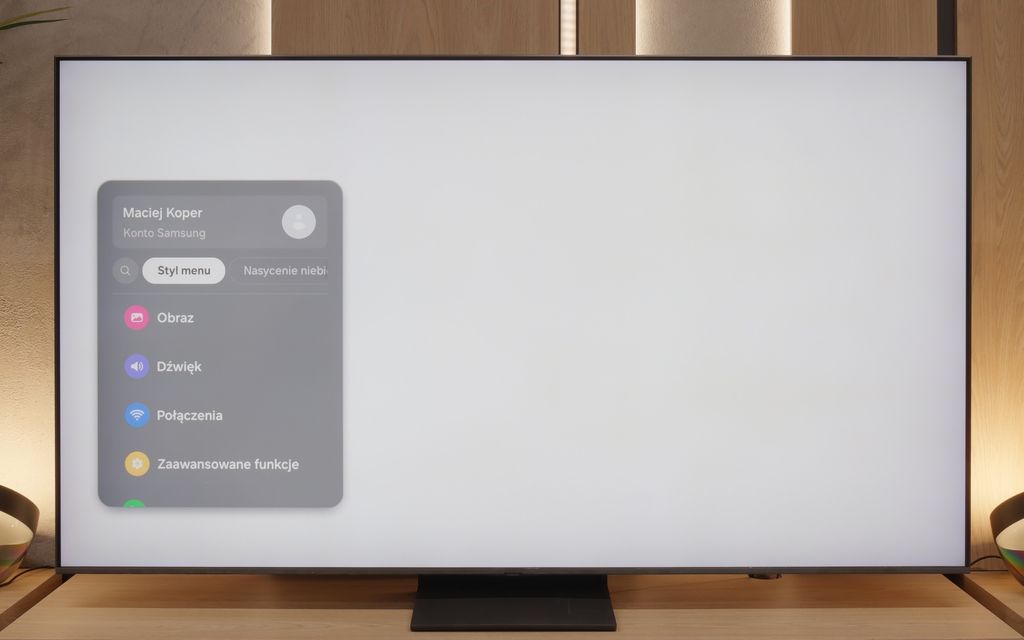
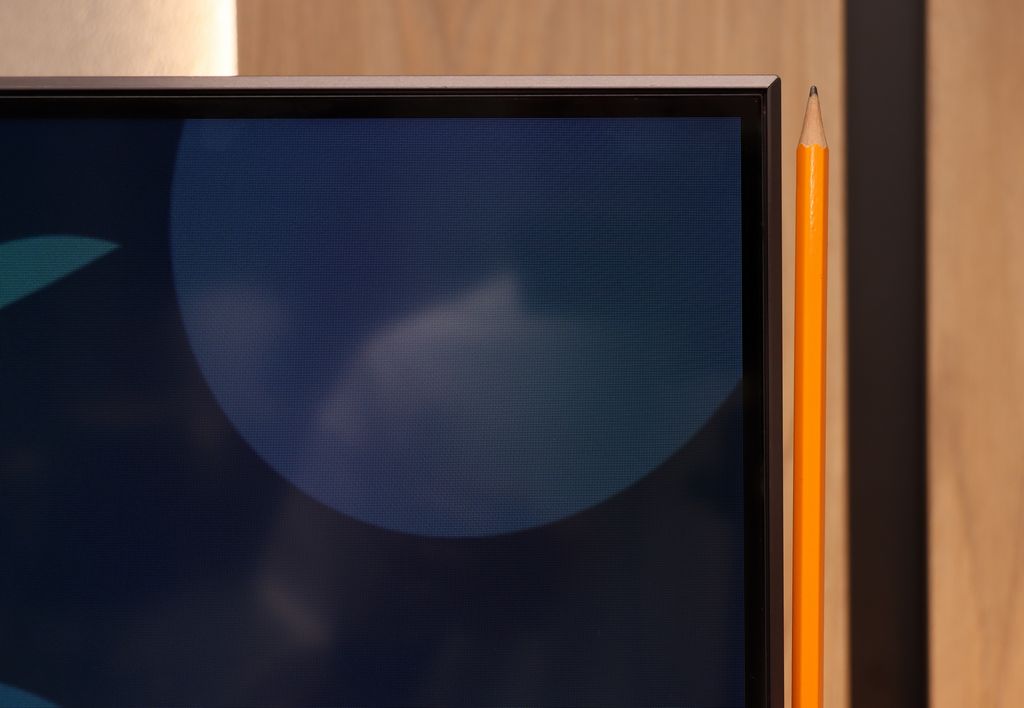
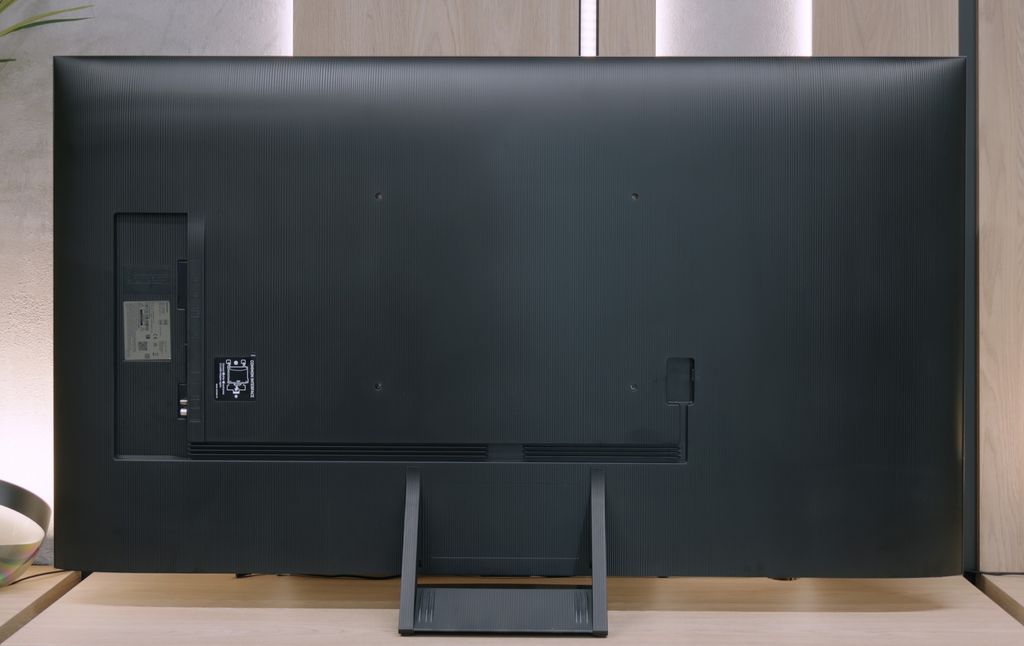
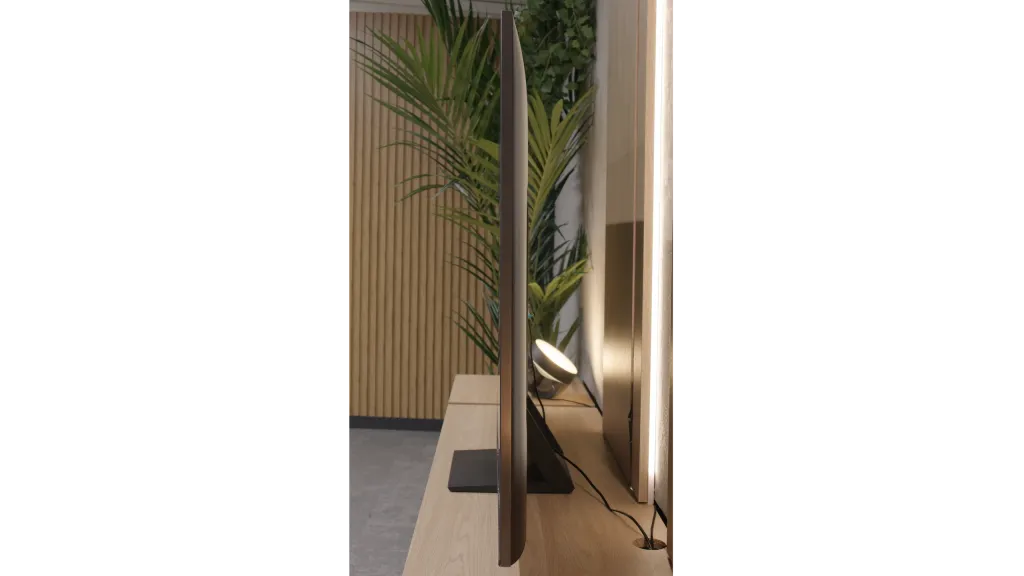




Contrast and black detail
6.8/10
10/10
Local dimming function: Yes, number of zones: 88 (8 x 11)
Contrast:

Result
34,100:1

Result
8,200:1

Result
32,500:1

Result
4,550:1

Result
3,800:1

Result
∞:1

Result
∞:1

Result
∞:1

Result
∞:1

Result
∞:1
Halo effect and black detail visibility:
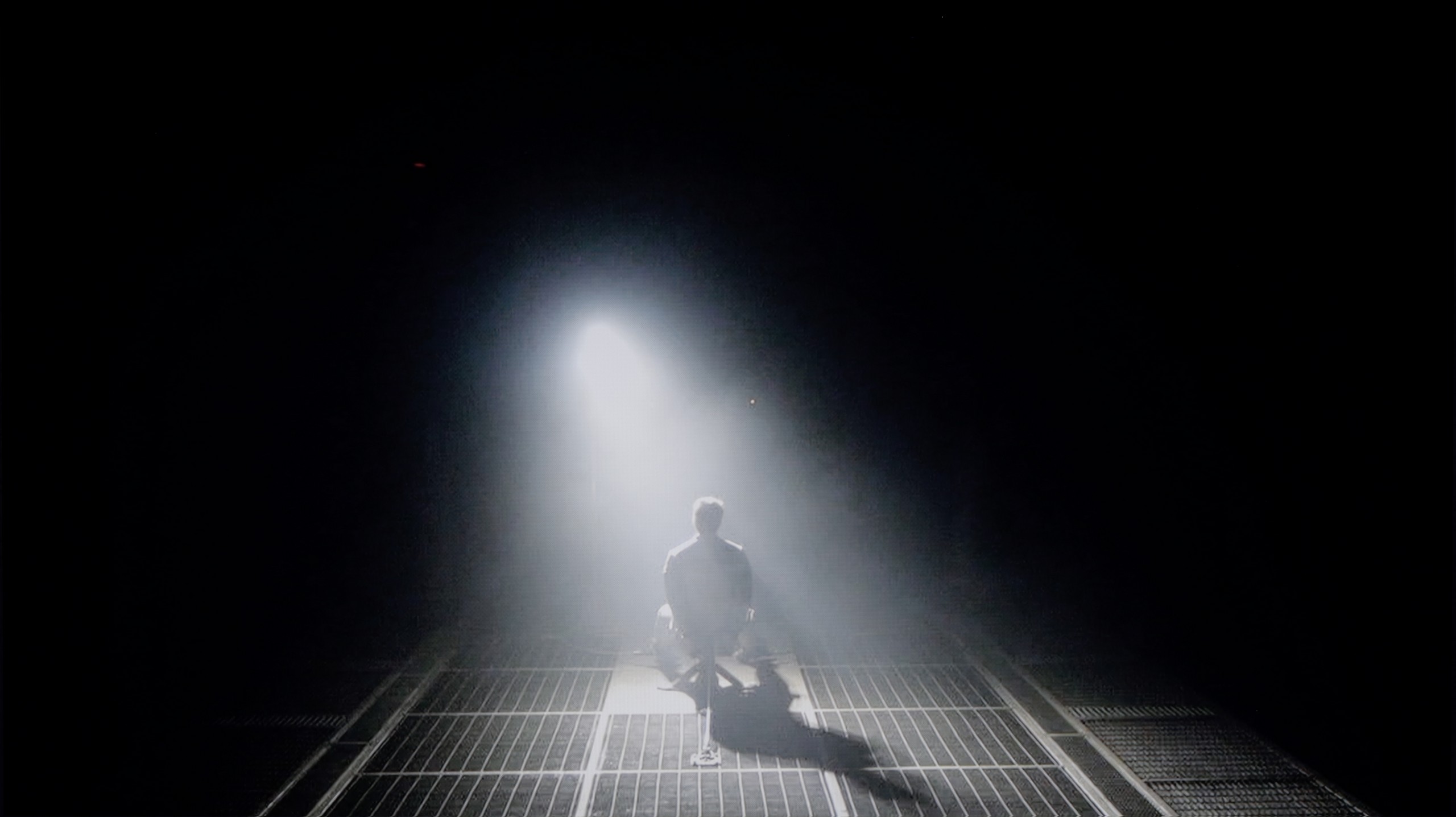

QN80F is a representative of the Neo QLED series, meaning it is a television with Mini LED backlighting. Unlike its cheaper cousin, the QN70F model, the diodes here are placed directly behind the panel (instead of at the edges), which gives a solid advantage from the start when it comes to contrast control. In the 65-inch variant we tested, we counted 88 dimming zones – a result that may not be very impressive, but as it turned out, sufficient to achieve quite decent results.
In tests based on scenes from films such as Oblivion or The Meg, the QN80F performed well – blacks were deep, and the overall image consistency was eye-catching. However, in more demanding moments (e.g., scenes with a large number of bright details on a dark background), a halo effect appeared. This is where the limitation of the number of zones comes into play – bright elements could bleed around, and some details in dark areas became less visible. In one scene with a helicopter (The Meg), we even noticed slight brightness flickering, as if the television was trying its best to maintain visibility of the details at the expense of black depth.
However, these are not issues exclusive to this model – the halo effect or contrast drops in very complex scenes are something that most Mini LED televisions struggle with, even the more expensive ones. In its class, the QN80F still performs positively and offers noticeably better contrast than the QN70F model with edge lighting. For most users, this will be a level more than sufficient – although not perfect.
In terms of black and contrast, the Philips OLED770 doesn’t introduce any revolutions – but with OLEDs, it would be hard to expect one. The organic matrix allows for complete blacking out of individual pixels, which in practice gives us almost perfect black and contrast that reaches infinity. Whether we’re watching night scenes in films or scenes full of tiny bright points, the TV precisely separates details from the background. There are no halo effects or other artifacts typical for LCD TVs with local dimming here. Choosing an OLED – also in the version of model 770 – you can be assured that in this category, the image will look fantastic.
HDR effect quality
5.8/10
6/10
Luminance measurements in HDR:

Result
799 nit

Result
533 nit

Result
717 nit

Result
245 nit

Result
656 nit

Result
546 nit

Result
657 nit

Result
726 nit

Result
704 nit

Result
275 nit
Scene from the movie “Pan” (about 2800 nits)


Scene from the movie “Billy Lynn” (about 1100 nits)


Static HDR10


Dynamic: HDR10+
Dynamic: Dolby Vision


HDR luminance chart:
Philips OLED770
HDR luminance
Luminance of RGB colors
SAMSUNG QN80F
HDR luminance
QN80F is quite a bright screen – in synthetic tests, it reached nearly 1000 nits, which allows for reasonable expectations of HDR content. And indeed, in many scenes, the TV can truly shine. Sequences with a lot of light – like shots from the movie Life of Pi or wide, bright surfaces in The Meg – look impressive. Brightness stays around 700 nits, which provides a solid effect, enough to feel the true "HDR magic." Unfortunately, not every scene looks this good. In content with small, bright details on a dark background, like in Sicario 2, the TV can struggle – it can significantly dim individual elements, sometimes to the point where they disappear from the image. This is a result of the limited number of dimming zones, forcing the device into compromises: either stick to inky blacks or sacrifice some detail. QN80F usually chooses the former. As a consolation, it offers quite decent coverage of a wide color palette – DCI-P3 at 93%. It's not the highest score on the market, but it's more than enough for most content on streaming platforms.
The Philips OLED770 doesn't try to compete with the brightest OLEDs on the market, and it's actually hard to expect that, as it's the entry-level model in Philips' range for 2025. In our measurements, it reached a maximum of around 700 nits, which allows for enjoyment of HDR effects in scenes where light appears in spots – for instance, in the flash of headlights or a starry sky. In such moments, the picture can truly amaze. However, it's different when there are more bright elements on the screen. The TV, like many cheaper OLEDs, restricts luminance at that point, and the entire image noticeably dims. This was best seen in a scene from the movie The Meg, where the sun rises behind an oil platform – the brightness dropped to around 250 nits, which is almost three times less. The HDR effect remains pleasing to the eye, but it's worth being aware that this model performs best in scenes with less intense light. Fortunately, the OLED770 also has an ace up its sleeve – the coverage of the DCI-P3 colour palette is as high as 99%, so colours in movies and games are vibrant and very close to what the creator intended.
Factory color reproduction
6/10
6.2/10


Factory Mode
After calibration


Factory Mode
After calibration
We always test TVs in the best available factory mode – for the Samsung QN80F, this is the Filmmaker mode, and indeed, it provides the settings closest to the creators' intentions. However, this doesn’t mean everything looks perfect. In SDR content, the biggest issue was an unbalanced white balance – slight deficiencies in green and a noticeable excess of red led to noticeable colour errors, and one could say the screen had a pinkish hue. This was clearly visible in the colour checker test, where colours “escaped” outside their target fields – to such an extent that a sensitive viewer's eye could catch it even without the help of a meter.
In HDR content, the white balance was much better, but another issue arose – brightness management. The EOTF curve caused an overly bright image most of the time, which affected the perception of contrast and made the screen slightly “flicker” during dynamic changes in light. We’ve already discussed this in the paragraphs about black levels and HDR. Fortunately, Samsung offers users plenty of options. The QN80F features a rich set of calibration options, including a 20-point white balance – which is why we decided to check what this TV is really capable of after a proper calibration.
The first measurements already show that the factory settings of the Philips OLED770 have a lot to improve, even in Filmmaker mode. The white balance chart clearly indicates a lack of blue, giving the image a slightly yellowish tint. In practice, white is not snow-like, but leans towards warmer hues – which some may even find appealing, but from a precision standpoint, this is a deviation from the norm. The gamma, on the other hand, tends to be on the darker side – the average value is around 2.6 instead of the reference 2.4. In mid-tones, the image appears muted and more saturated, which can look too "cinematic" but detracts a bit from the naturalness. However, the most significant issues are visible in colour reproduction. The average error is relatively high, and some colours – particularly shades of grey – deviate significantly from what should be seen. In everyday viewing, this means that sometimes colours may look less natural than we would wish.
Color reproduction after calibration
8.3/10
9/10




After conducting a thorough calibration, it was possible to bring most image parameters to a really good level. The white balance in both SDR and HDR presents itself almost perfectly – the image is natural, neutral, and free from the previously noticeable redness. Colours have gained depth, and the overall visual experience has become more pleasant and cohesive. It was also possible to partially manage brightness, which in the factory version could cause issues. The EOTF chart shows that the television performs much better with brightness after calibration – there is no longer excessive dimming of certain elements. In films, it can still be noticed that the QN80F has a tendency to slightly brighten the smallest bright details – this is already a consequence of the device's construction and the limited number of dimming zones. In short: not everything can be overcome, but what was possible has been improved. After calibration, the QN80F makes a really good impression, looking simply more mature and professional.
Philips OLED770 had shown signs from the start that it harboured significant potential, but it was hard to fully appreciate this in its factory settings. The image was often too warm, and some colours appeared as if they had lost their naturalness along the way. Calibration revealed that this television was very amenable to work – it responded to every adjustment and almost immediately unveiled another layer of its capabilities. The white balance was set in both SDR and HDR so that the yellowish haze disappeared and a neutral, clear white emerged. Gamma stabilised closer to perfection, which helped restore the naturalness of mid-tones, while shadows ceased to be artificially darkened, perhaps even with a slight brightening effect. The result was obvious... Movies are watched with greater ease; the image has cinematic depth without the feeling that something is overly darkened. However, the most interesting aspect was working on the colours. Factory errors were not dramatic, but slightly noticeable – skin tones could be too warm, and grey wasn’t always the shade we expected. After calibration, the error values dropped to around 2, and in many cases even below 1. This is a level that is definitely lower than the threshold of discernibility for the human eye. In other words, after correction, the colours finally “clicked” into place. Looking at the screen, we felt like the television had begun to speak with a full voice. Like an instrument that had finally been properly tuned.
Smoothness of tonal transitions
9/10
7.6/10












In this regard, the QN80F really delivers. Transitions between colours are smooth, nothing tears, and there are no annoying bands in the sky or strange spots in the shadows. Movie scenes in darker tones performed particularly well – and that's where most televisions start to struggle. If you really focus, you might notice slight banding in the brightest areas, but that's really stretching it. In everyday viewing, no one should have a problem with this. To put it simply: the tonal transitions are so good that you can forget about them – and just enjoy the movie.
In this category, there’s a noticeable improvement compared to last year's Philips models. The OLED770 handles colour gradation significantly better, and strongly visible transitions or artificial banding occur less frequently than before. Interestingly, we achieved the best results in dark scenes – where most televisions, especially those with WOLED panels, tend to struggle the most. A good example is the shot of an actor floating in red water – the transition from intense red to black looks nearly perfect here, without the typical “stair steps.” The situation is somewhat worse in light parts of the image. With extremely bright gradients, particularly close to white, the television has trouble maintaining smoothness. This can be noticed, for example, in a scene from the film Kingsman, where in the background of the bright sky with the sun, subtle bands of the sunrise appear instead of a smooth blur. Fortunately, these situations are relatively rare, and in everyday viewing, the OLED770 presents itself very solidly and doesn’t disrupt immersion as was the case in last year's models.
Image scaling and smoothness of tonal transitions
7/10
7/10
Smooth transition function
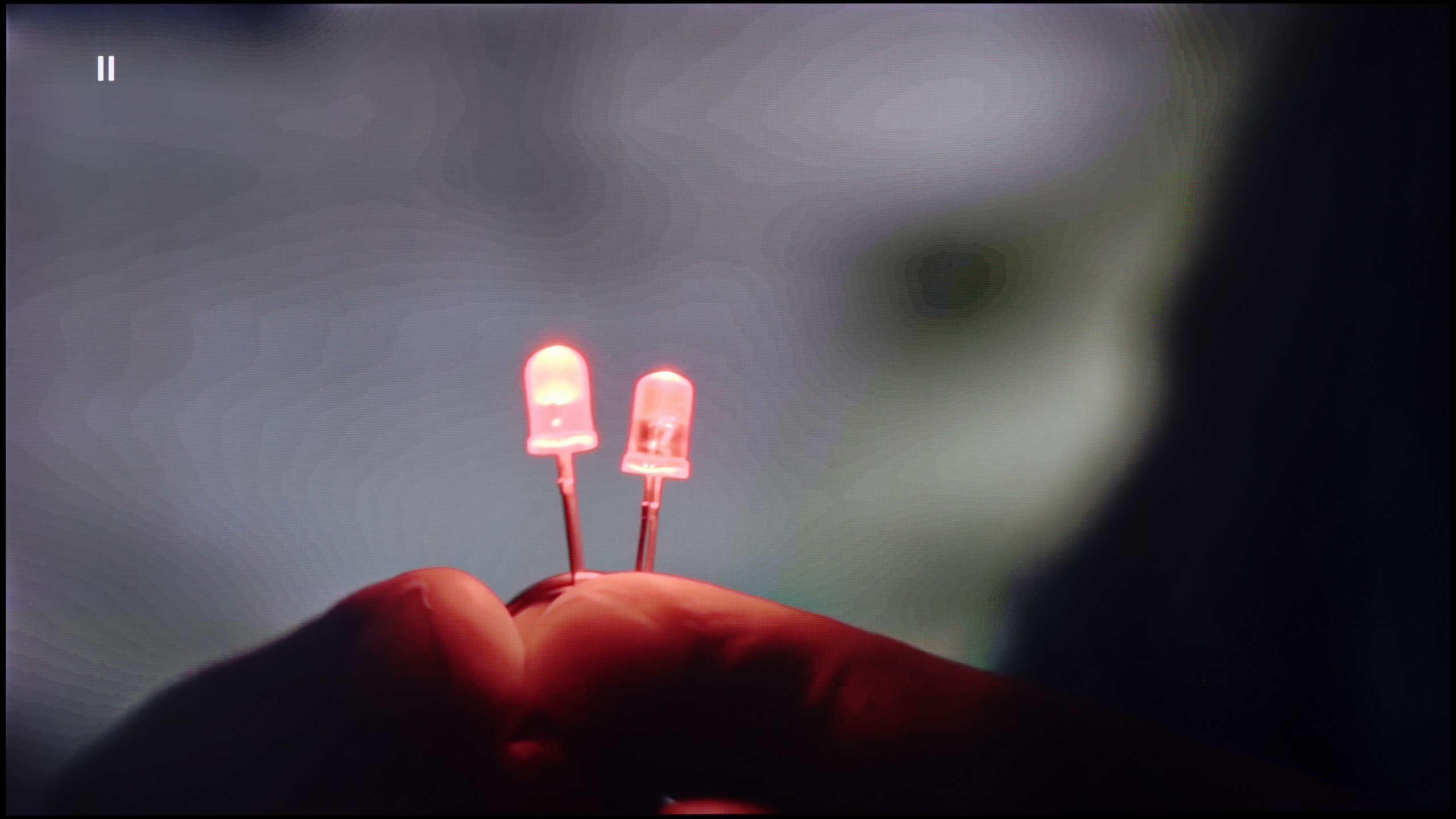

Image without overscan on the SD signal


If you notice strange colour transitions or unwanted artefacts while watching lower quality materials – for example from YouTube – it's worth checking the settings and enabling the noise reduction feature. In our opinion, the best setting is at the 'medium' level – it effectively smooths out problematic colour transitions without overly blurring the entire image. However, it's important to know one thing: this option tends to remove film grain. If someone values preserving that effect (e.g., in older films), it's better to simply turn it off – regardless of the level, the grain always disappears.
Regarding resolution scaling (also known as upscaling), Samsung – as usual – performs very well in this area. The QN80F doesn't quite match the top models costing tens of thousands, but for its price class, it performs impressively. Materials of very poor quality (e.g., from SD television or older video files) are noticeably improved and look surprisingly decent. The only noticeable downside is the typical Samsung issue with overscan – which is a slight cropping of the image edges at very low resolutions, such as 576p.
The problem of the previously mentioned colour connections can largely be mitigated thanks to the "distortion reduction" function, which is an algorithm for smoothing tonal transitions in Philips. It works best at a low level – effectively eliminating unwanted colour bands while not introducing strange artifacts or losing image detail. This is one of those features that is truly worth keeping on.
The issue of upscaling is somewhat less impressive. Images from lower resolution can be too soft, while in some parts the characteristic "jaggies" appear. The impression is that the algorithm is trying to reconcile two contradictory directions – smoothing and sharpening – and ultimately fails to find the golden mean. As a consolation, it's worth noting that the television does not have problems with overscan, meaning it does not cut off the edges of the image, which can sometimes happen in other competing models.
Blur and motion smoothness
7.5/10
8.4/10
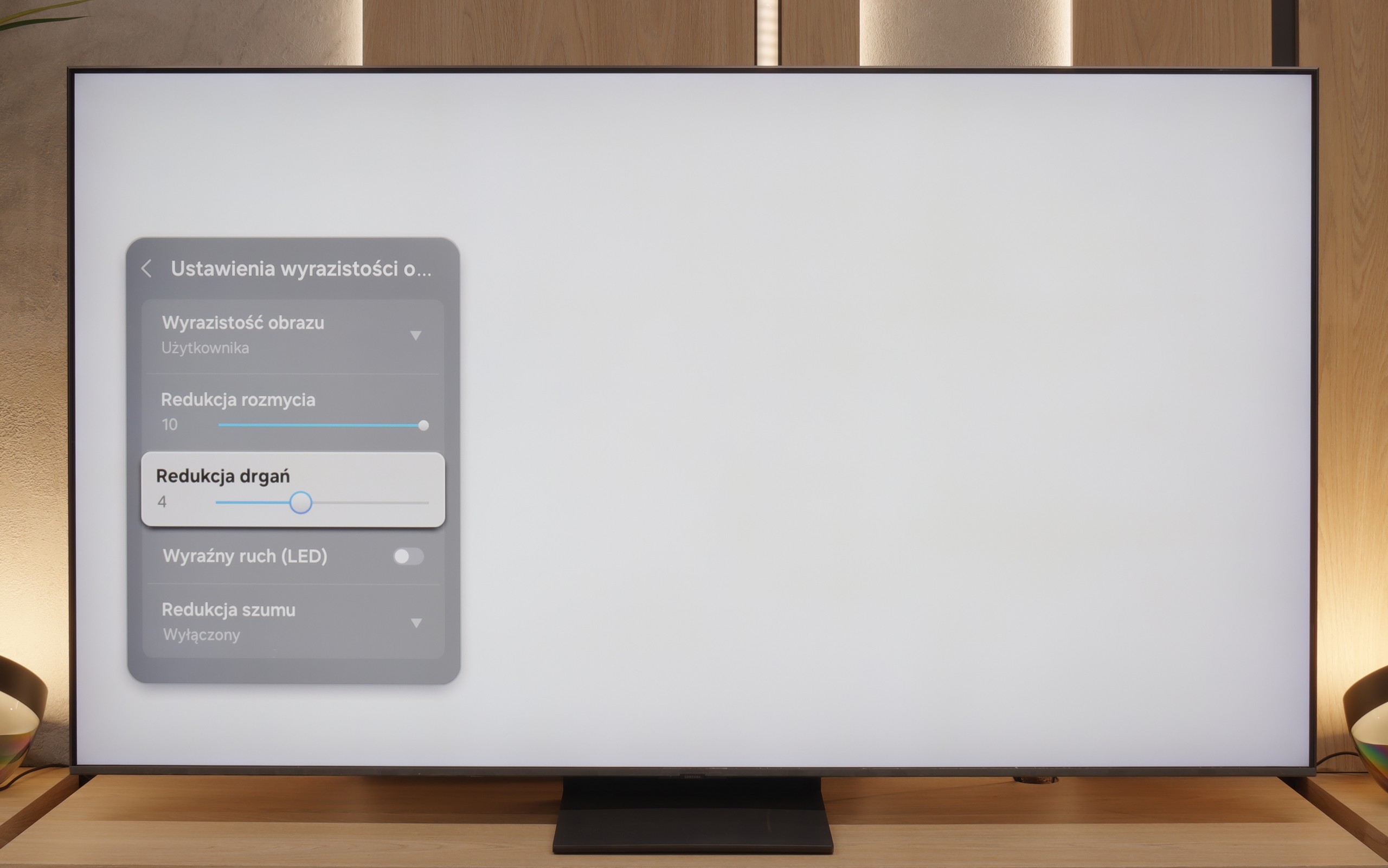

Blur (native resolution, maximum refresh rate):
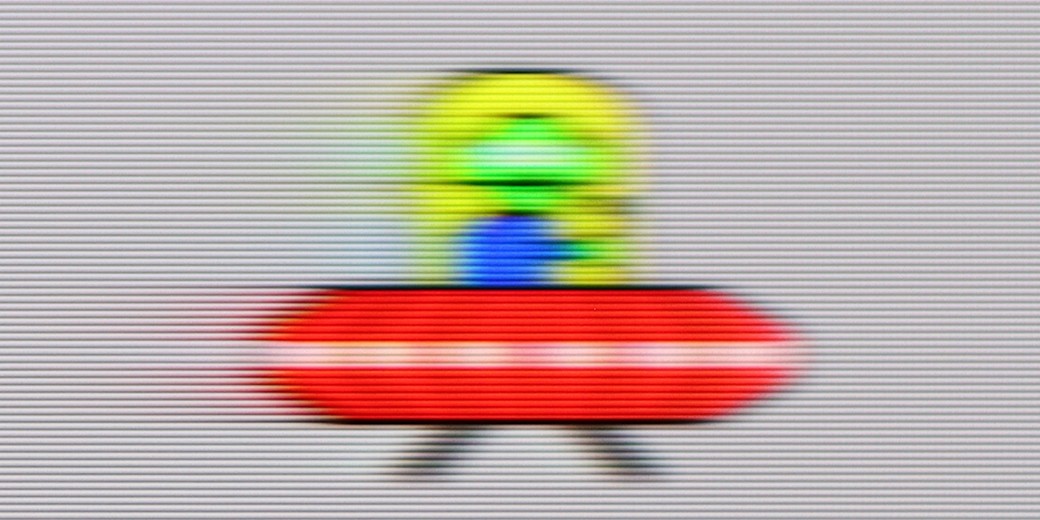
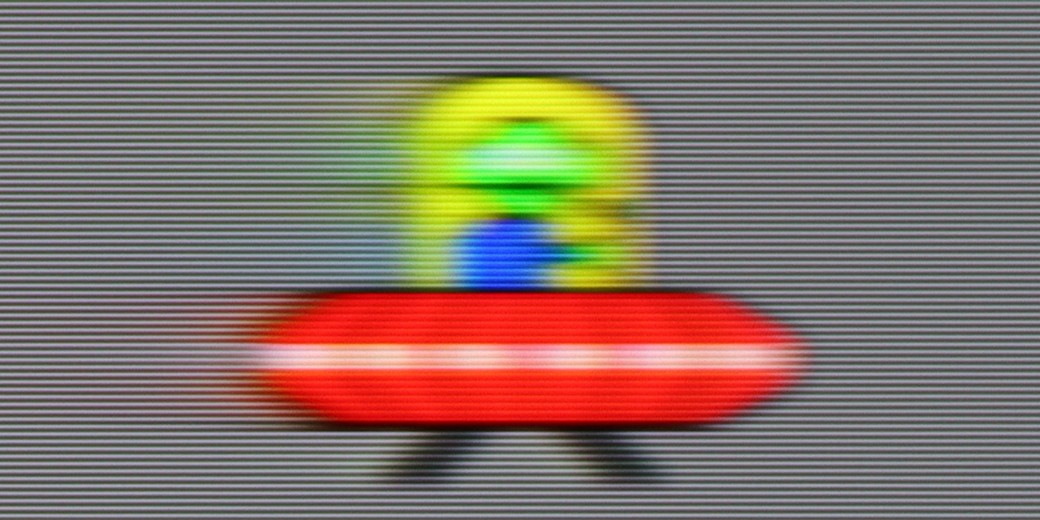
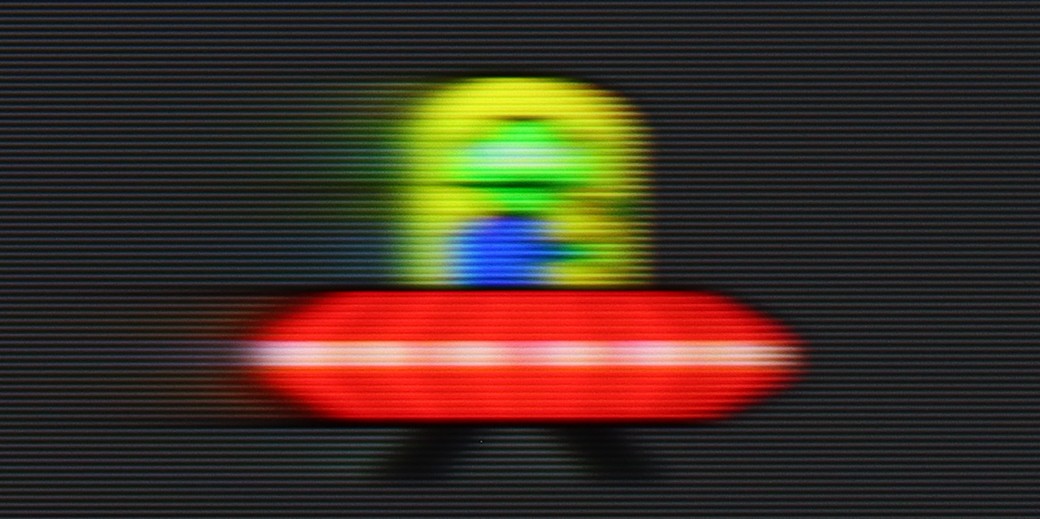



Blur (BFI function enabled):
Image flickers in this mode



Smużenie ():
Smużenie (4K@144Hz):



QN80F is truly a “fast” TV. The panel used offers a refresh rate of up to 144 Hz, which in practice means that the screen keeps up with the action – whether we’re watching a movie, playing games, or browsing dynamic content online. The image doesn’t stutter, isn’t overly blurred, and everything simply looks smooth and pleasing to the eye. Of course, the manufacturer hasn’t forgotten about cinema fans – in the settings, we find an option to adjust motion smoothness, allowing us to tailor the effect to our own preferences. You can leave a more “frame-y” look (for those who enjoy the classic film vibe) or crank up the smoothness to a higher level to achieve a theatrical smoothing effect. Importantly, the choice is ours. Watching movies and playing on the QN80F is just plain fun.
The issue of the panel in the Philips OLED770 is not entirely straightforward. The manufacturer claims a 120 Hz panel, but our measurements showed that the screen can accept a 4K signal even at 144 Hz. This sounds like great news – because who wouldn't want an additional mode for PC gamers at this price? However, the reality turned out to be more complex. With 120 Hz content, the television behaves like most OLEDs – the image is absolutely clear, with no trace of blurring or smearing, ideal for both dynamic games and sports broadcasts. The problem only arises at 144 Hz. Unlike models with official support for this frequency, here we see the phenomenon of so-called frame skipping. This means that the television is unable to display all the frames – some of them are skipped, causing motion to lose smoothness and double outlines to appear on the screen. The effect resembles the operation of the BFI function, which Philips does not offer in this model anyway.
Console compatibility and gaming features
8.2/10
10/10
- ALLM
- VRR
- VRR range48 - 144Hz40 - 120Hz
- Dolby Vision Game Mode
- Correct implementation of HGIG
- 1080p@120Hz
- 1440p@120Hz
- 4K@120Hz
- Game bar
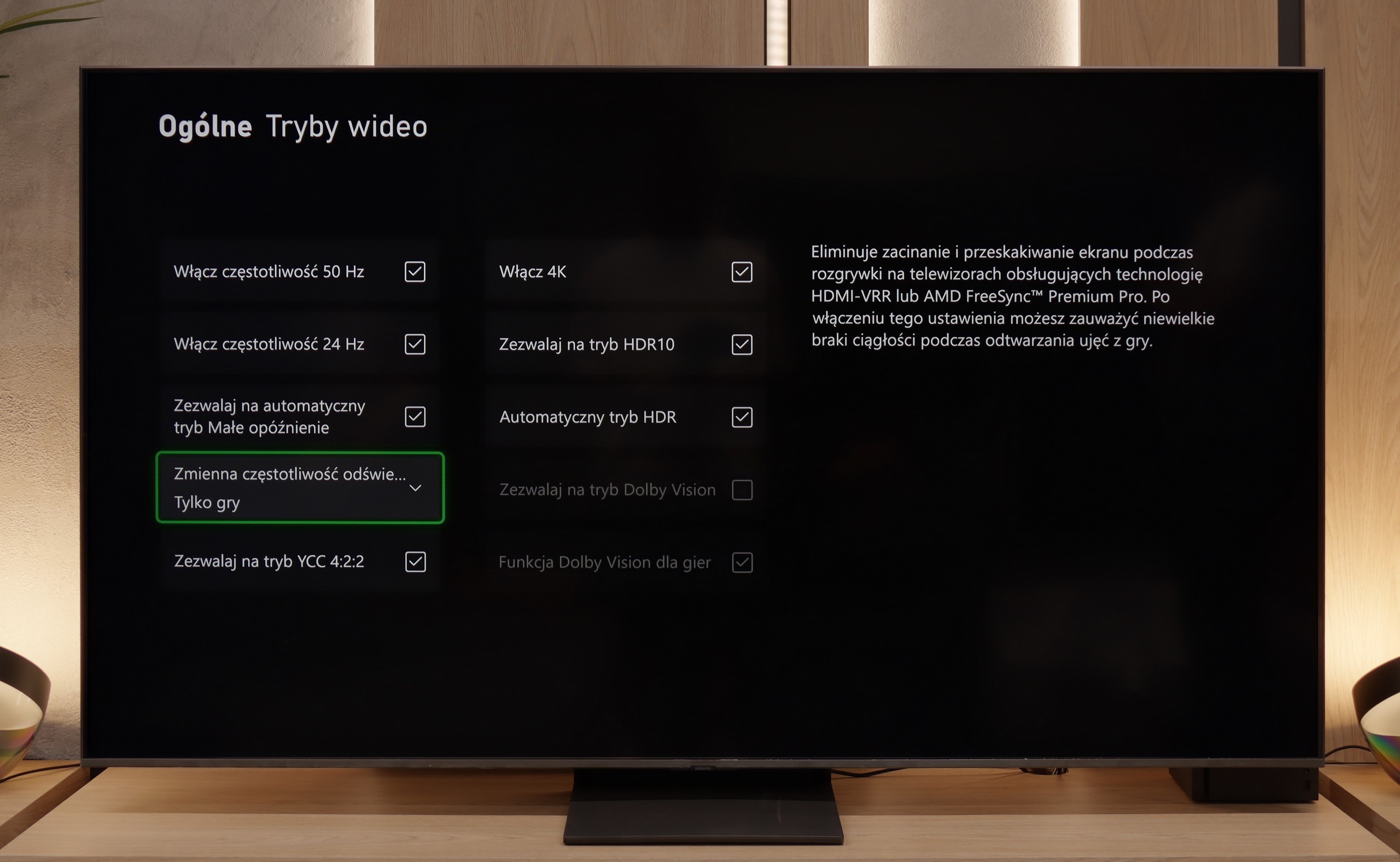

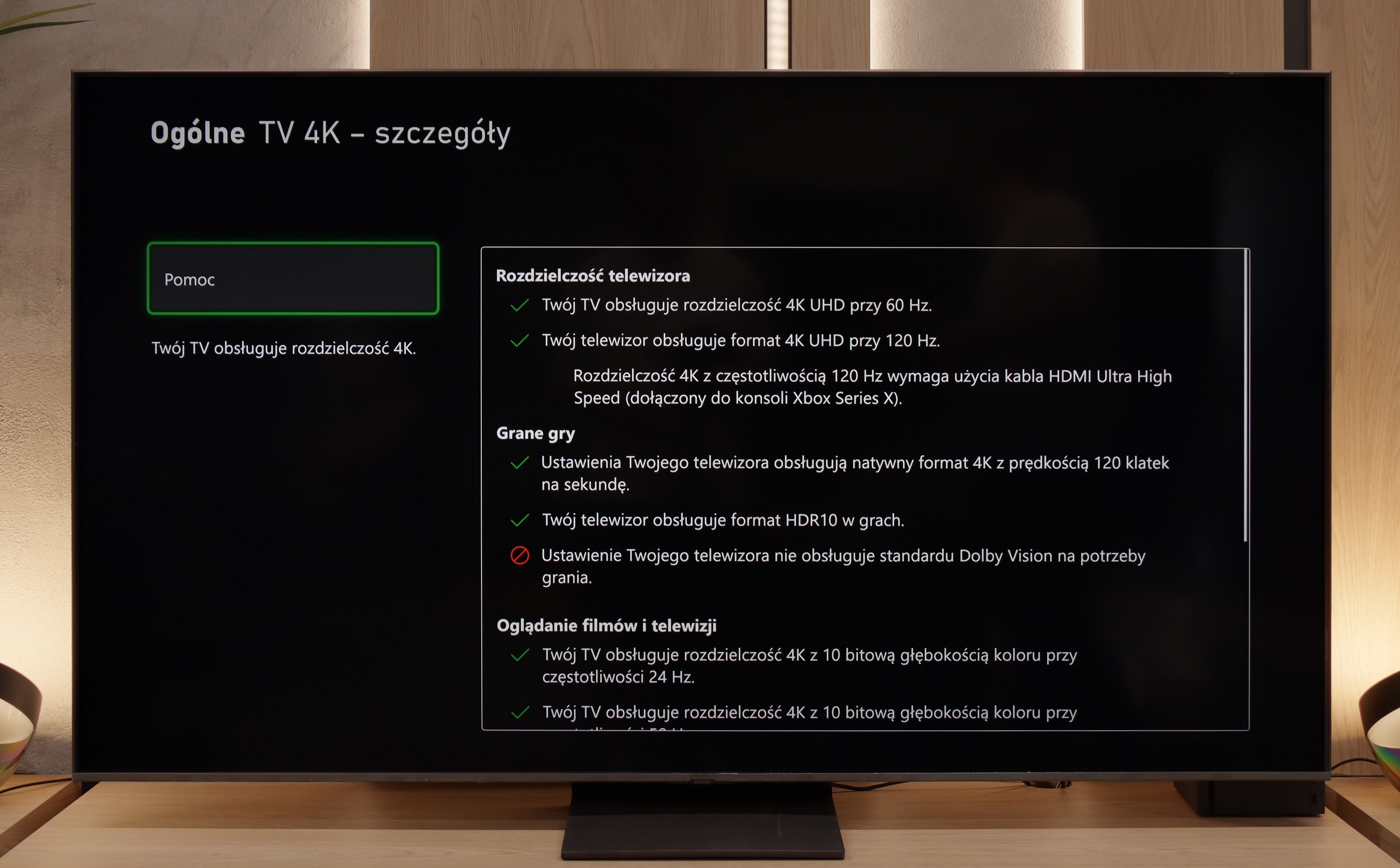

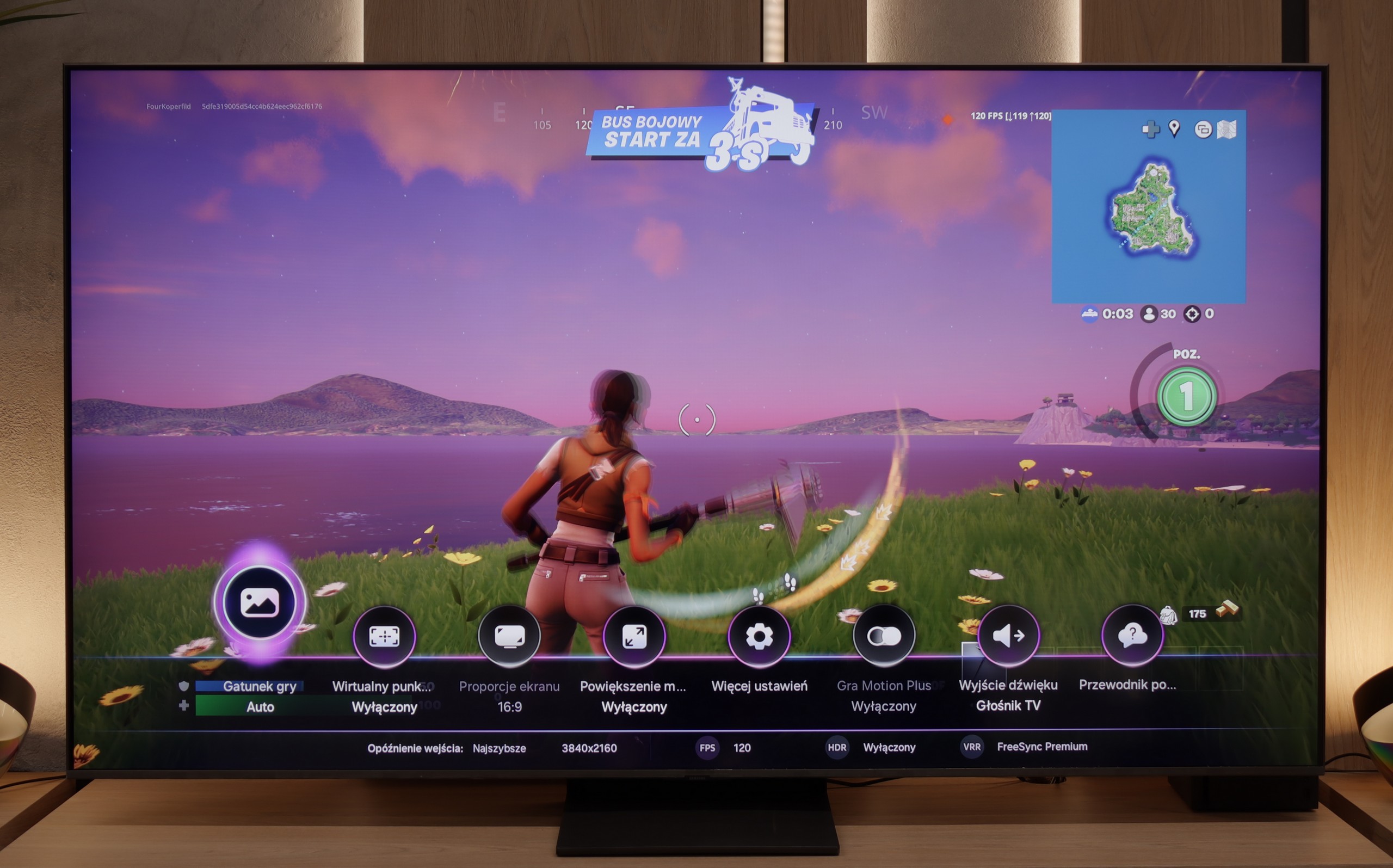

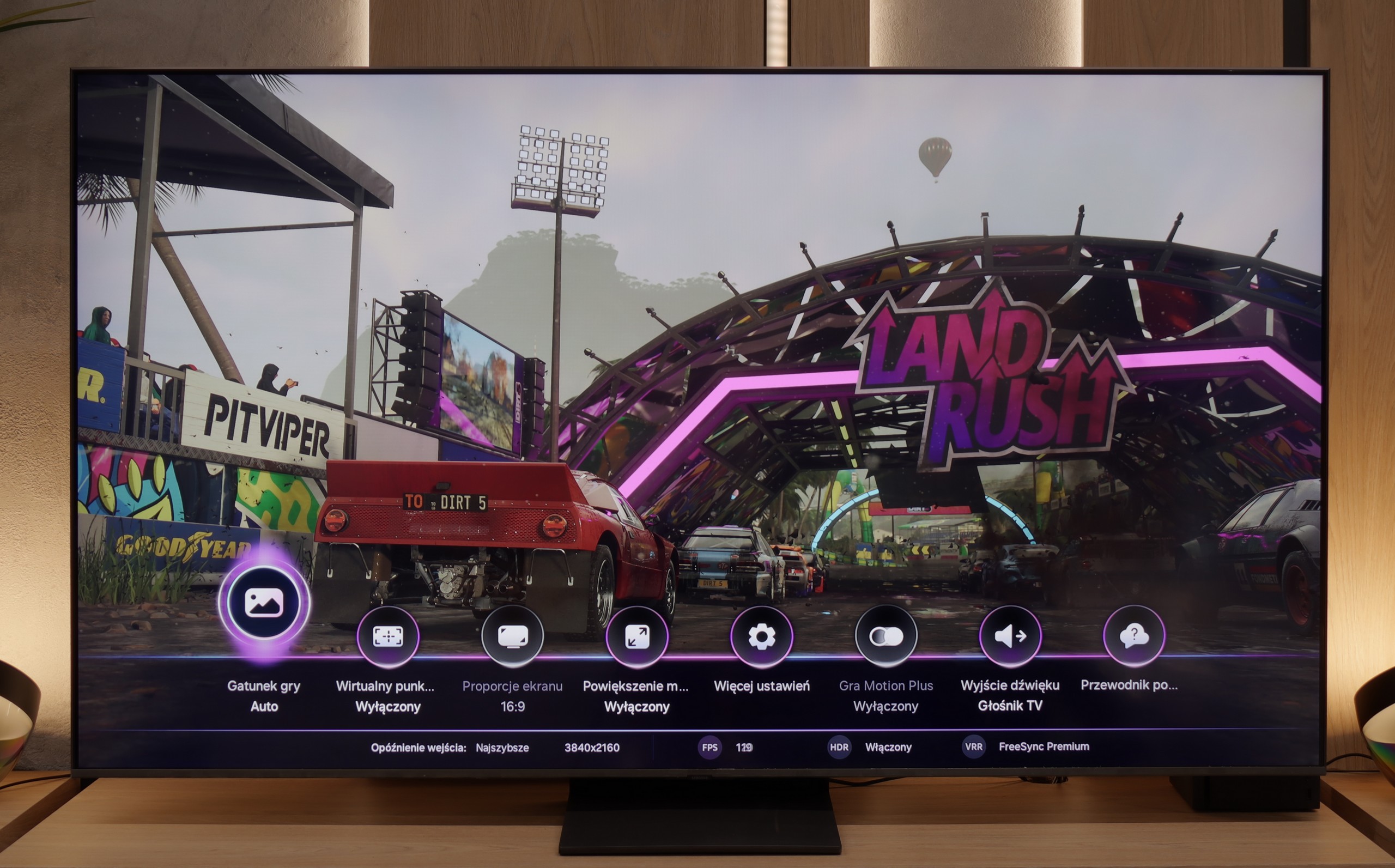

Samsung QN80F is a TV that delivers on almost every front when it comes to gaming. We have a 144 Hz panel, four fully-fledged HDMI 2.1 ports, support for gamers in the form of variable refresh rate (VRR), auto low latency mode (ALLM), and even one of the best-designed game bars on the market. The cherry on top is the motion smoother, which – as the only one in the world – works in games without significantly increasing input lag. Sounds like an almost perfect TV for gamers? And indeed, it’s almost that.
As usual, Samsung does not support Dolby Vision in gaming, but that’s no surprise anymore. However, what is much more surprising is that... the HGIG feature has disappeared – which is a system that allows a console (e.g. PlayStation 5 or Xbox Series X) to precisely match HDR tone mapping to the capabilities of the TV. In the latest firmware update for the 2025 models, this option simply vanished. It looks more like a bug than a deliberate move, but it must be honestly noted that as of the writing of this review, the HGIG feature is simply absent.
And it’s this one missing feature that turns the QN80F from an almost perfect gaming TV into a “nearly” perfect device. It’s a pity – because everything else indicated that Samsung could once again set the bar very high in this generation.
If someone is looking for a TV for gaming, the Philips OLED770 is a candidate that's hard to overlook. The mere fact that this is an OLED gives it a great starting point – perfect blacks and infinite contrast make evening sessions in atmospheric games look like they've been taken straight out of a cinema. Added to that is the Ambilight system, which uses LEDs on the back of the TV to extend the image onto the wall behind the screen. The effect is such that even just playing FIFA can look like a small spectacle, and in horror games, the atmosphere becomes really thick. On the technical side, it's also quite decent. The Philips OLED770 supports variable refresh rate (VRR) up to 120 Hz, has an automatic mode for gamers (ALLM), and for those using an Xbox Series X, Dolby Vision support in games is also available. You just need to know that in this mode, the input lag is slightly higher than standard, although still at an acceptable level. As a bonus, we also get the 'Game Bar', which is a special tool strip for gamers. It's not the most conveniently designed solution, but it allows for a quick view of key parameters without exiting the game. Overall, this gives a picture of a TV that has all the most important gaming features on one hand, and on the other can add something unique – Ambilight. And it's this mix of technology and visual effect that makes the OLED770 one of the better screens for gaming in a home environment.
Input lag
9.8/10
9.8/10
SDR
HDR
Dolby Vision
The QN80F doesn't disappoint when it comes to response time. The input lag for 120 Hz content drops below 10 ms, which can be considered an almost perfect result – it's hard to expect more in this class of televisions. Gaming is smooth, responsive, and without delays that could annoy even the most sensitive players. For 60 Hz material, the lag is higher, around 19 ms, but this is a completely natural phenomenon and still falls within comfortable limits.
As we mentioned earlier, the only anomaly that has been captured during testing is the Dolby Vision Gaming mode. In this setting, the latency can reach up to 30 ms. This is not a particularly impressive result, and more demanding players may turn up their noses, but in practice – during casual sessions – the difference will not be greatly noticeable. The standard HDR10 and SDR modes perform much better, however. In the case of a 120 Hz signal, the input lag drops to a minimal 5 ms, which is an outstanding result and places the OLED770 among the top TVs suitable for dynamic gaming. In other words, if someone isn’t set on Dolby Vision on Xbox, the gaming experience will be fast, smooth, and free of unnecessary delays!
Compatibility with PC
8.8/10
7.6/10
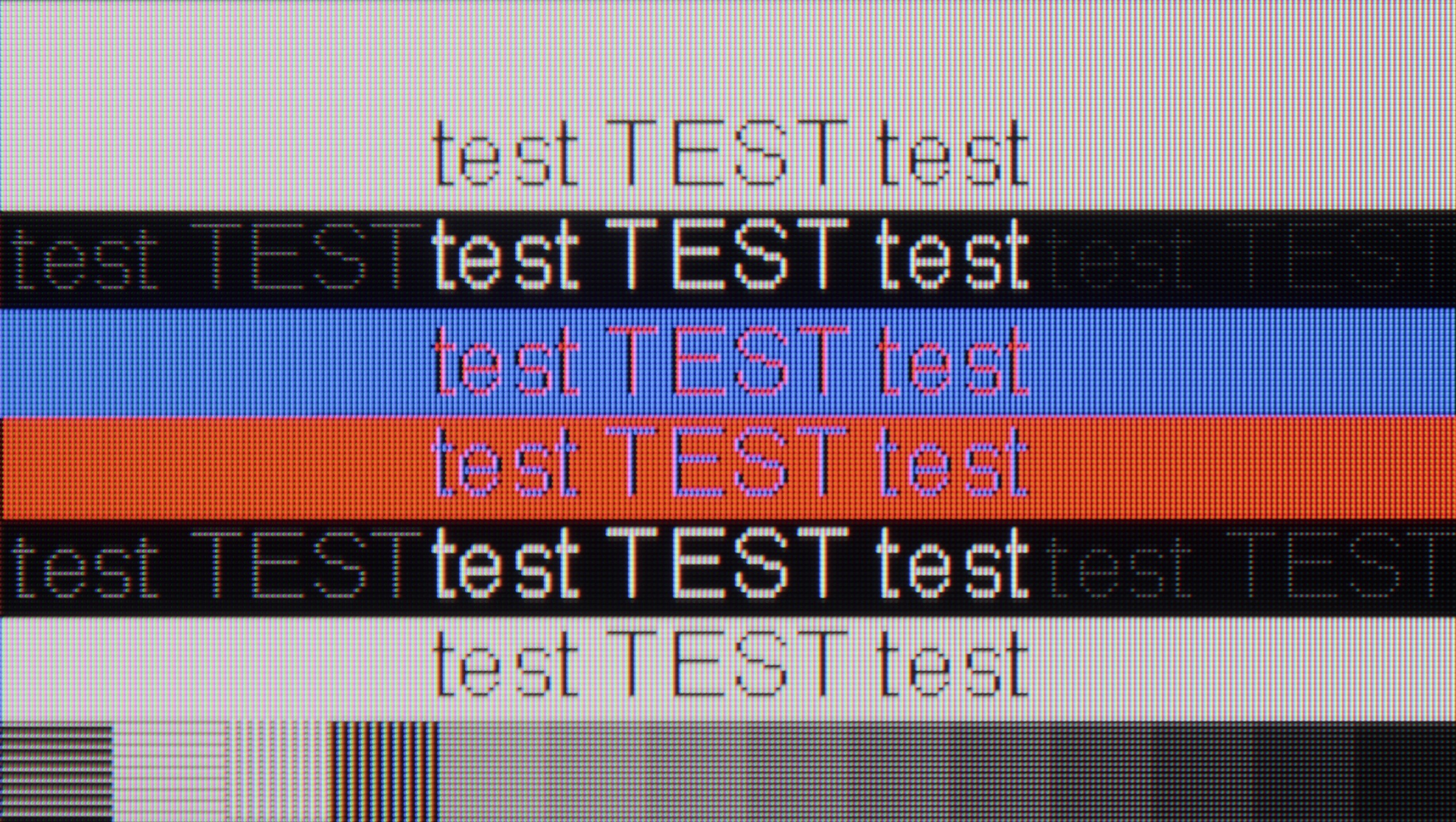

Playing on the QN80F with a computer connected is pure delight. The television works seamlessly with NVIDIA graphics cards (thanks to G-Sync support) and AMD (thanks to FreeSync Premium), and the 144 Hz refresh rate only enhances comfort during fast-paced gaming. Everything works right away, without unnecessary fiddling with settings – just as it should.
When it comes to work, it's very good as well. The readability of fonts is high, and texts look sharp and clear. With very thin horizontal lines, you might notice slight imperfections or shadows, but honestly – you have to take a good look. Unless, like us, you sometimes like to examine the screen with a magnifying glass… then you might spot something 😉.
Philips has learned from previous models and has finally improved the implementation of chroma 4:4:4. This is important news for those planning to connect the TV to a computer, as it means no problems with sharpness and readability of fonts. Text looks clear and crisp, so the OLED770 can easily be called an excellent display for office work or browsing the internet. Of course, very demanding users may notice some imperfections resulting from the WRGB pixel arrangement typical of WOLED panels, but in practice, this does not significantly impact comfort. The TV also performs well in games launched from a PC. The panel allows for real refresh rates of up to 120 Hz, and with low input lag, this provides a very smooth image without noticeable stutters. The only thing missing is support for G-Sync and – as we mentioned before – a proper 144 Hz mode, but despite that, the overall performance is really solid. For those looking for a versatile screen for computer and console use, the OLED770 is a choice that’s hard to underestimate.
Viewing angles
3.1/10
7.7/10
QN80F, like most TVs with a VA panel, isn't impressive in terms of viewing angles. Just tilt a bit to the side, and you'll notice a significant drop in brightness and lost colour saturation. The image loses its "depth" and "vividness", and darker scenes may appear slightly washed out. However, this is a typical characteristic of VA panels, which offer significantly better native contrast compared to IPS panels in return. In short: you win some, you lose some. If you're sitting directly in front of the screen – there won't be any issues. But when watching together in a larger group, it's worth keeping this in mind.
In terms of viewing angles, the Philips OLED770 presents a very high level typical of OLEDs. The image remains readable and saturated even when viewing the screen from the side – there is practically no drop in contrast or fading of colours. In this category, it only falls short of QD-OLED panels, which we find either in very expensive premium models or in one exceptional case – in the 55-inch Samsung S85F. However, in everyday use, the differences are difficult to detect, and the OLED770 performs nearly perfectly. Only at really extreme angles can a slight degradation of colours be noticed.
TV efficiency during daytime
6.6/10
4.8/10
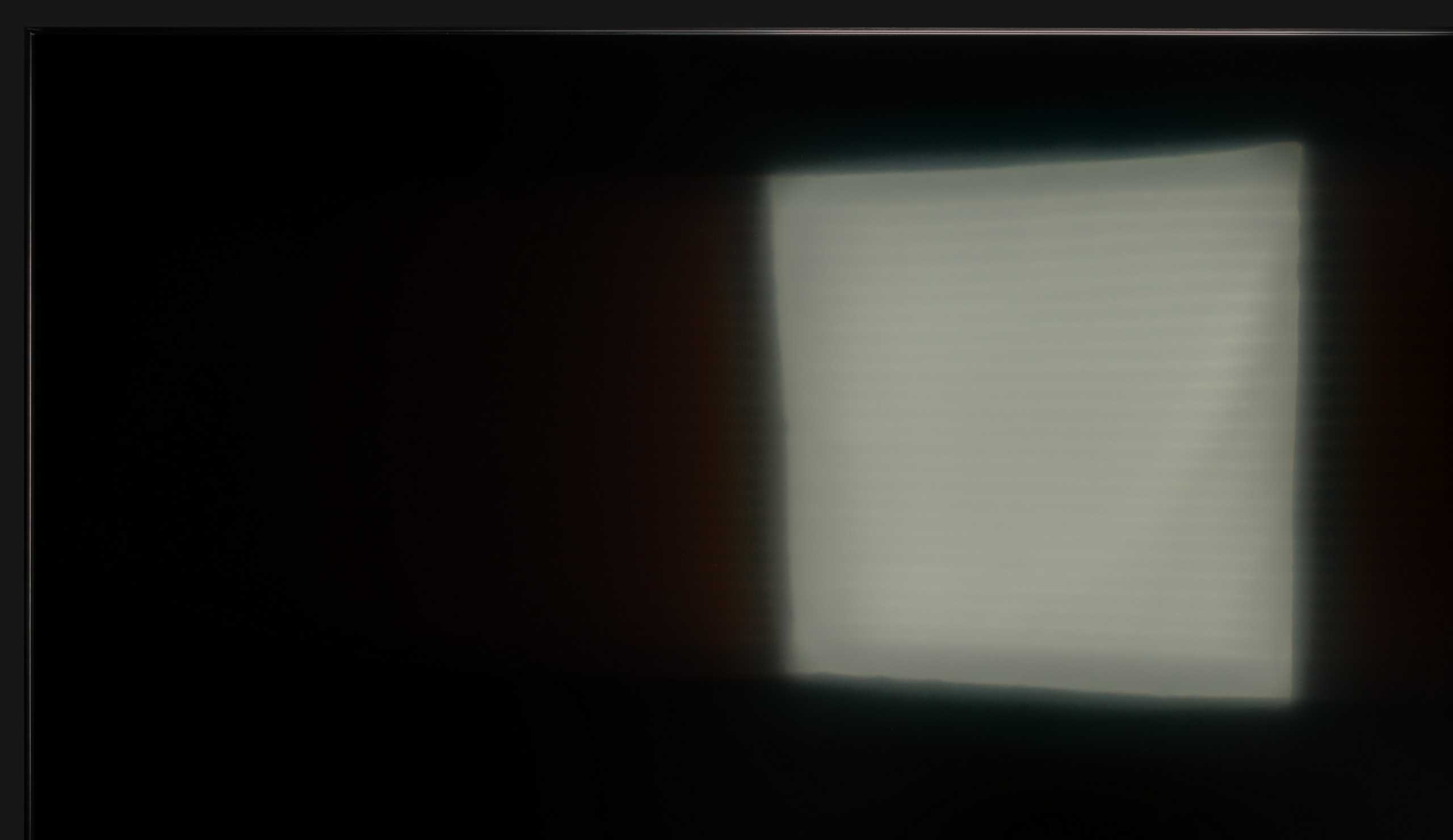



Matrix brightness
Average luminance SDR
Philips OLED770: 249 cd/m2
SAMSUNG QN80F: 543 cd/m2
QN80F is really a bright television. The average brightness in SDR material is around 550 nits, regardless of the scene, which practically means that you can comfortably watch content even in a well-lit room – and there’s no need to close the blinds every time we turn on a film. The new satin coating on the panel also deserves praise, as it handles glare much better compared to last year's QN80D. Reflections are less bothersome, and the screen maintains readability in various lighting conditions. It’s hard to nitpick here – the QN80F performs simply brilliantly during the day.
OLED770 is not one of the brightest TVs, so it's hard to recommend it for very sun-filled living rooms. In a bright room, its limitations quickly become apparent – the screen catches reflections and behaves more like a lightly dimmed mirror. Glare reduction is average, and in direct light, the screen performs poorly. Fortunately, the panel's coating does not distort colours, so even during the day, the hues remain natural, and the blacks do not dramatically lose their depth. Nevertheless, it’s hard to say that the OLED770 is a TV designed for bright spaces – it will definitely find a better home in a dimly lit living room or in a bedroom, where its strengths can truly shine.
Details about the matrix
Subpixel Structure:
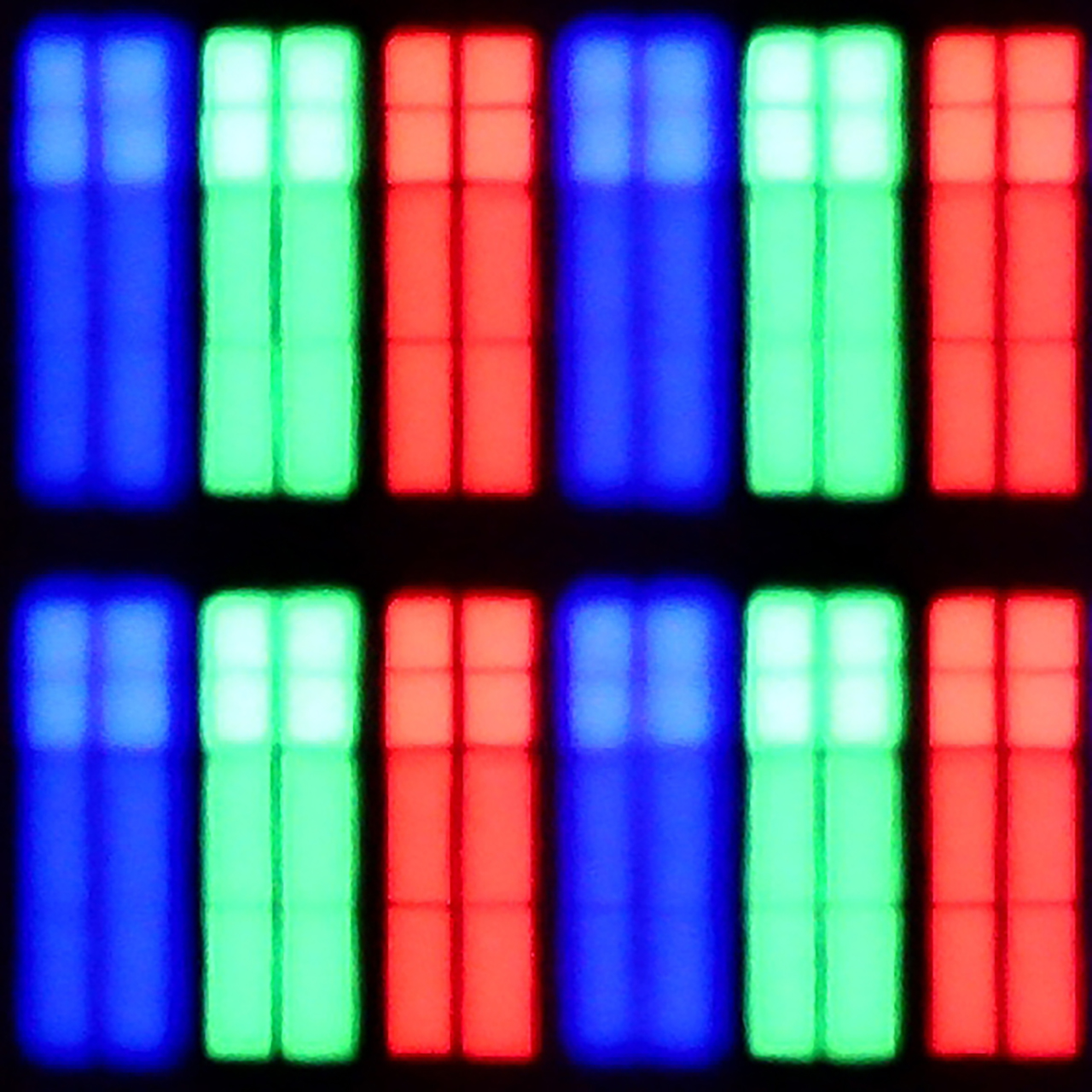

Panel uniformity and thermal imaging:


SAMSUNG QN80F
Philips OLED770
TV features
7.7/10
5.5/10
- HDMI inputs0 x HDMI 2.0, 4 x HDMI 2.1 48Gbps0 x HDMI 2.0, 4 x HDMI 2.1 48Gbps
- OutputsToslink (Optical audio), eARC (HDMI), ARC (HDMI)Toslink (Optical audio), eARC (HDMI), ARC (HDMI), Mini-Jack (Headphones)
- Network InterfacesWi-Fi 2.4GHz, Wi-Fi 5GHz, Ethernet (LAN) 100MbpsWi-Fi 2.4GHz, Wi-Fi 5GHz, Ethernet (LAN) 100Mbps
- TV receptionDVB-T, DVB-T2, DVB-S, DVB-S2, DVB-CDVB-T, DVB-T2, DVB-S, DVB-S2, DVB-C
Classic features:
- Recording to USB (terrestrial TV)
- Recording programming
- Picture in Picture (PiP)
- RF remote control (no need to aim at the screen)
- Backlit remote control
- Teletext
- Audio only mode
- Bluetooth headphones support
- Simultaneous Bluetooth headphones & TV audio
Smart features:
- AirPlay
- Screen mirroring (Windows Miracast)
- Voice search
- Voice search in native language
- Ability to connect a keyboard and mouse
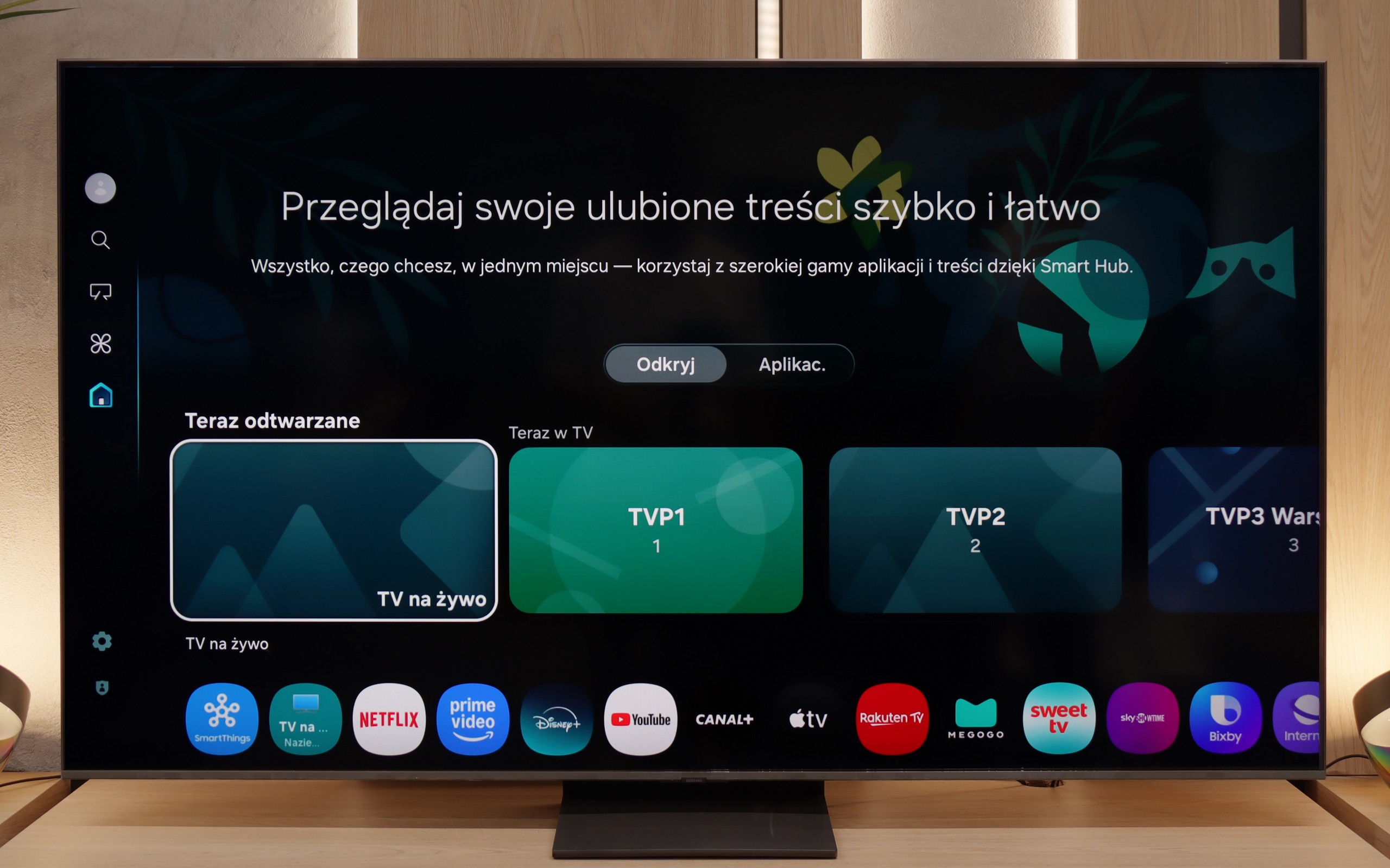
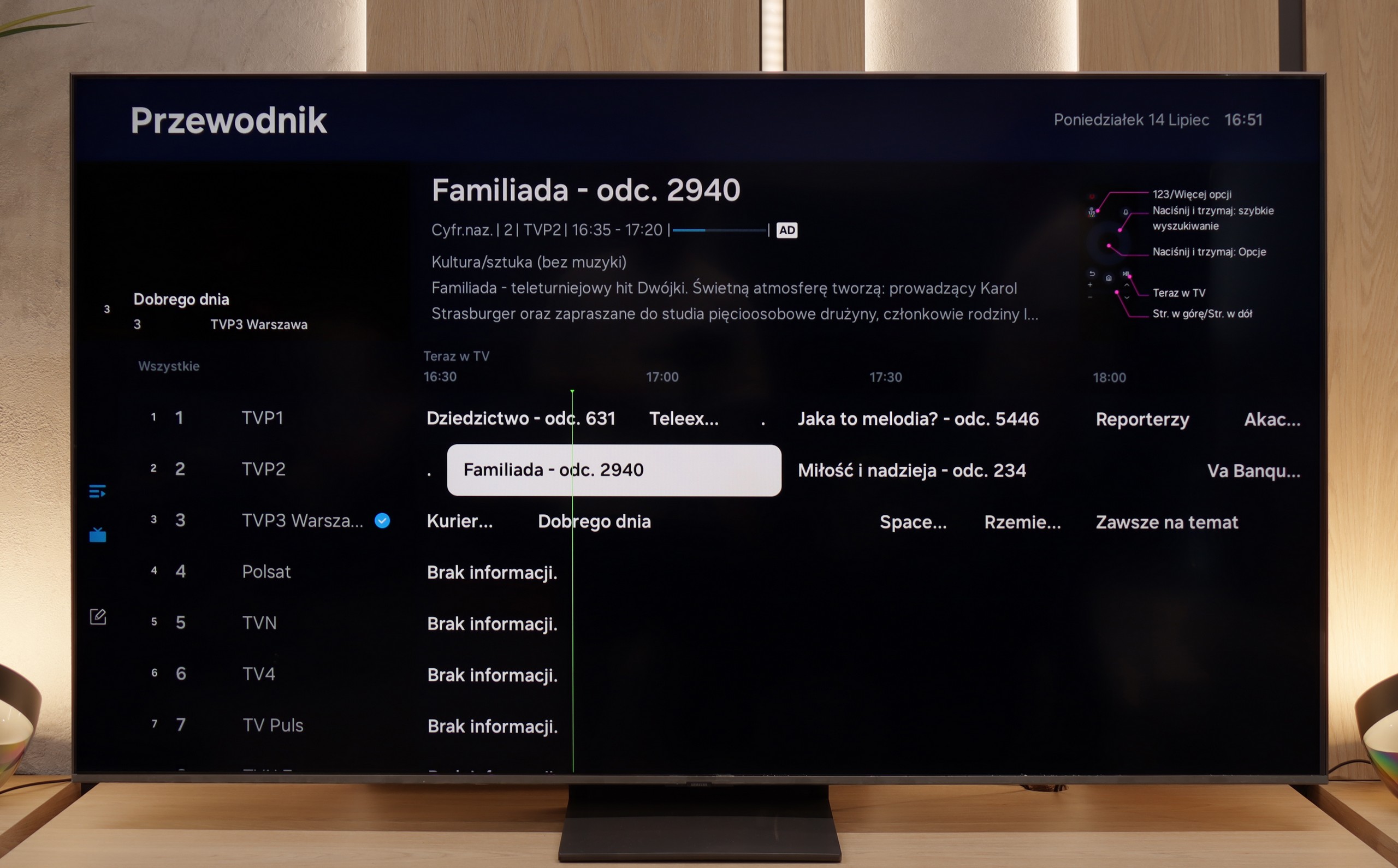
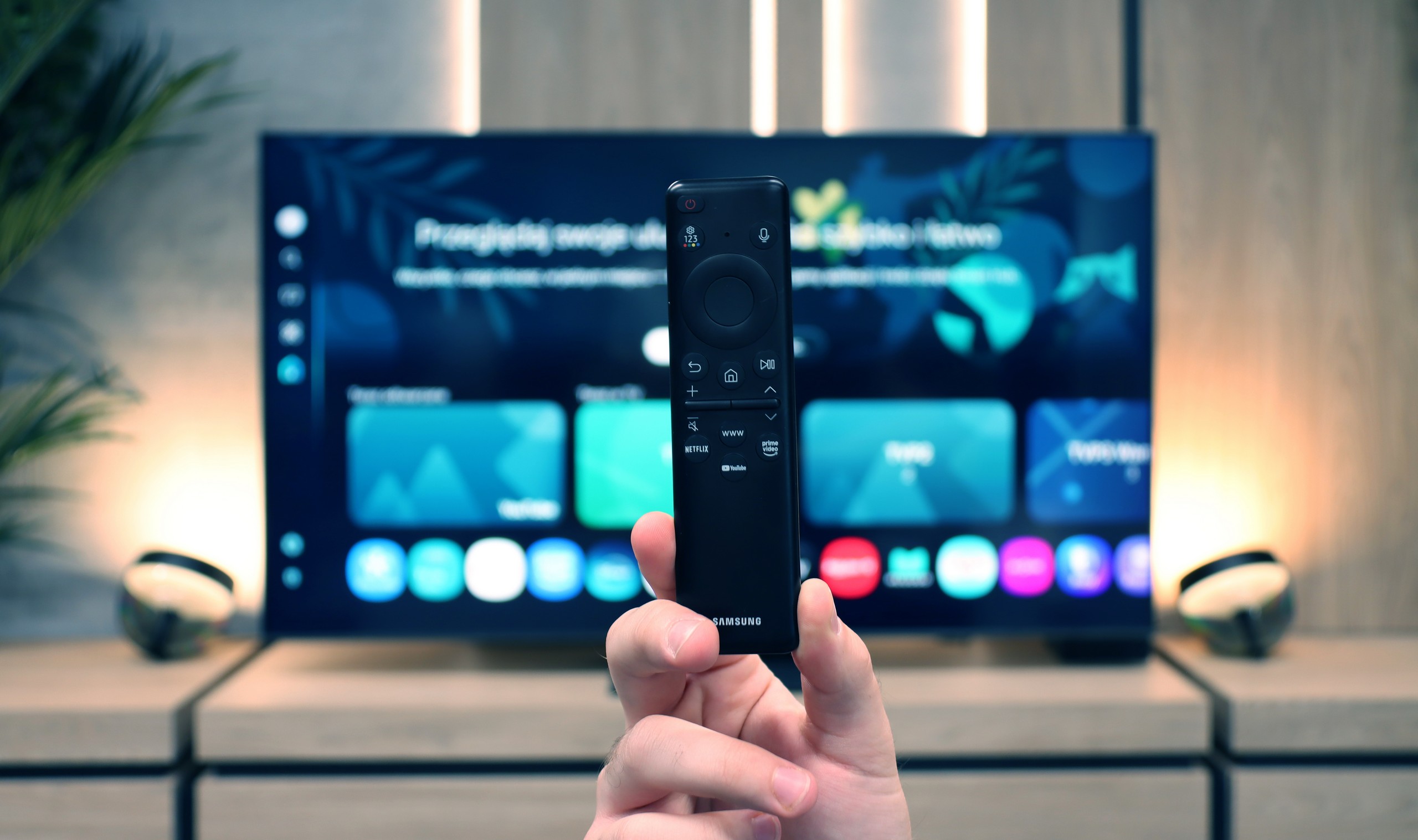
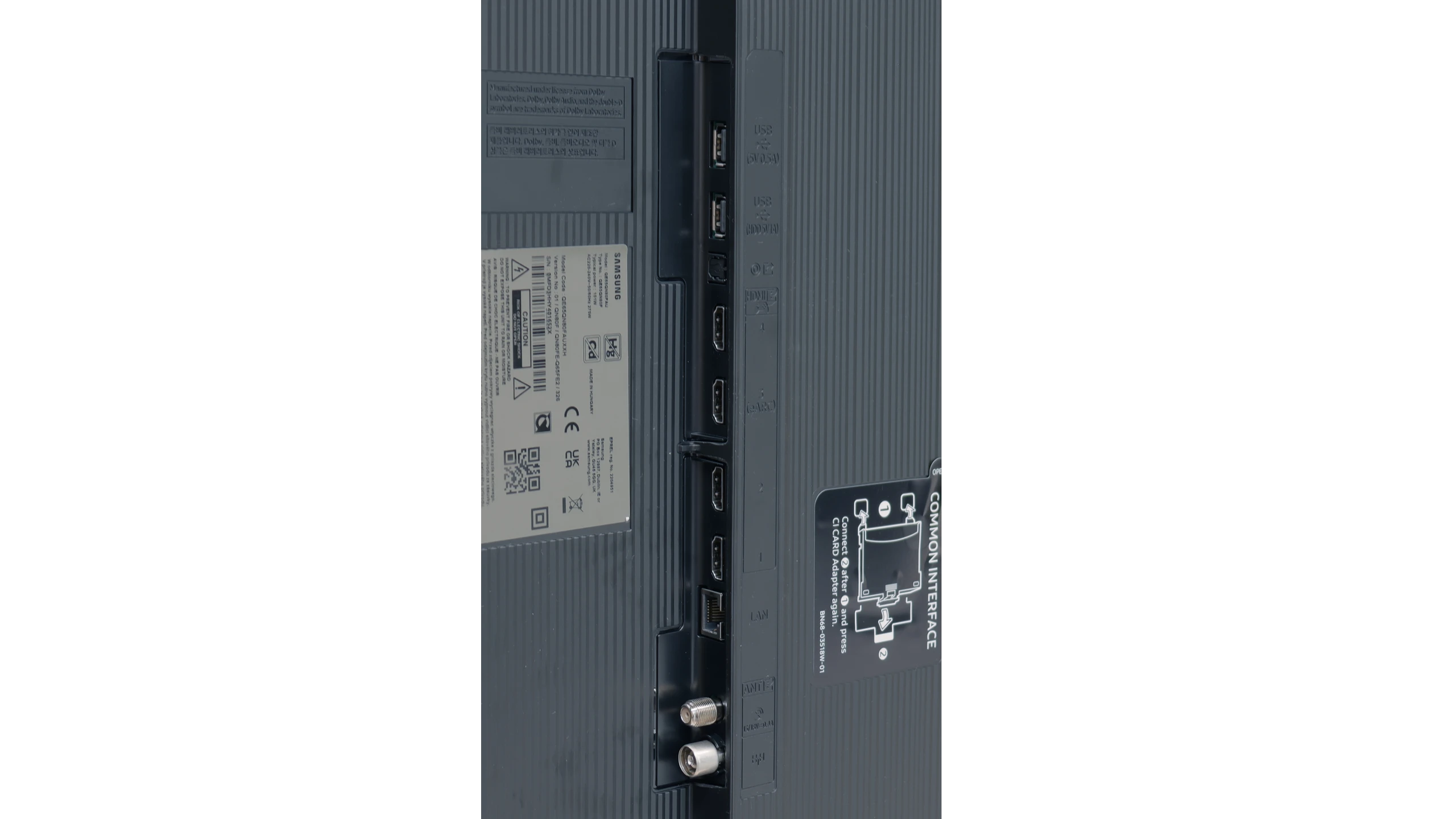




SmartTV QN80F: Tizen
When it comes to smart features, the QN80F has nothing to be ashamed of. On the contrary – Tizen is one of the richest operating systems in terms of functionality. We have voice search, AirPlay support, Miracast and all the major streaming platforms at our fingertips. But Samsung's real advantage reveals itself in the smart home – SmartThings. Not only can you sync light bulbs and vacuum robots, but you can also integrate devices from other manufacturers, thanks to support for the Matter standard. And suddenly it turns out that the QN80F can serve as a home command centre. There is just one "but" – Tizen is a closed system, so we might not find a few lesser-known apps. However, in practice, it still has everything that 99% of users need.
Classic TV features:
When it comes to classic features, it’s just as good – well, almost. The QN80F supports Picture-in-Picture, a rare but still useful PiP feature. We'll easily find EPG, the good old teletext (yes, it works!) and the ability to connect external devices via Bluetooth – whether it's headphones or a soundbar. Unfortunately, it lacks the option to record to USB from the built-in tuners. This is a small annoyance, especially since competitors in a similar price range are increasingly offering this feature. It may not be a must-have function, but since everything else works so well, it’s a shame it's missing that finishing touch.
Functional Features
Let's start with the basics, which are the classic functions of a television. The Philips OLED770 doesn’t turn the table here; we have a standard EPG interface, the ability to connect devices via Bluetooth, and a few simple configuration options including teletext. Interestingly, there is a jack connection, which is becoming quite rare these days. However, those with older receivers or wired headphones will appreciate it. The remote creates a good impression – it’s ergonomic and has a backlit numeric keypad – but there’s also a sense of a step back here. It works via infrared, so you have to aim it at the television, and frankly, by 2025 we would expect full wireless support. The exception is voice commands, which use Bluetooth, but even here there’s no reason for euphoria.
SmartTV Features – TitanOS
Speaking of voice, let’s move on to the Smart TV system, which is an element that largely defines the daily comfort of using a television today. And here the OLED770 clearly lags behind the competition. TitanOS operates quickly enough that it's not a disaster, but daily use can be frustrating due to minor bugs and shortcomings. Theoretically, we get support for AirPlay, but on the other hand, screen mirroring just didn’t work at all in practice. Voice search? Yes, but only through Amazon Alexa and without support for the Polish language. In other words, the features are there, but when we try to use them, we find that their practicality is severely limited and nearly useless. And it’s this Smart TV aspect that becomes the greatest hindrance of the OLED770. The image can be astonishing, gaming is excellent, and Ambilight creates a unique atmosphere – but when we transition to daily use of apps and services, we feel a sense of dissatisfaction.
Ambilight – Philips OLED770
Although in terms of smart functionality, the Philips OLED770 is rather average, it has something in store that its competitors honestly envy. We’re talking about the three-sided Ambilight system, which has been a hallmark of this brand’s televisions for years. The LED lights positioned at the back of the housing dynamically illuminate the wall in colours matched to whatever is happening on the screen at that moment. The effect is simple but very suggestive – the image seems to extend beyond the boundaries of the television, giving us the impression that the screen has suddenly grown by extra inches. During a movie screening, it can create atmosphere, in games it enhances immersion, and during regular TV viewing, it simply pleases the eye. It’s this addition that makes it so that despite the limitations of TitanOS, the OLED770 has something that can attract attention and give it character.
Playing files from USB
9/10
8.5/10
Supported photo formats:
Maximum photo resolution:
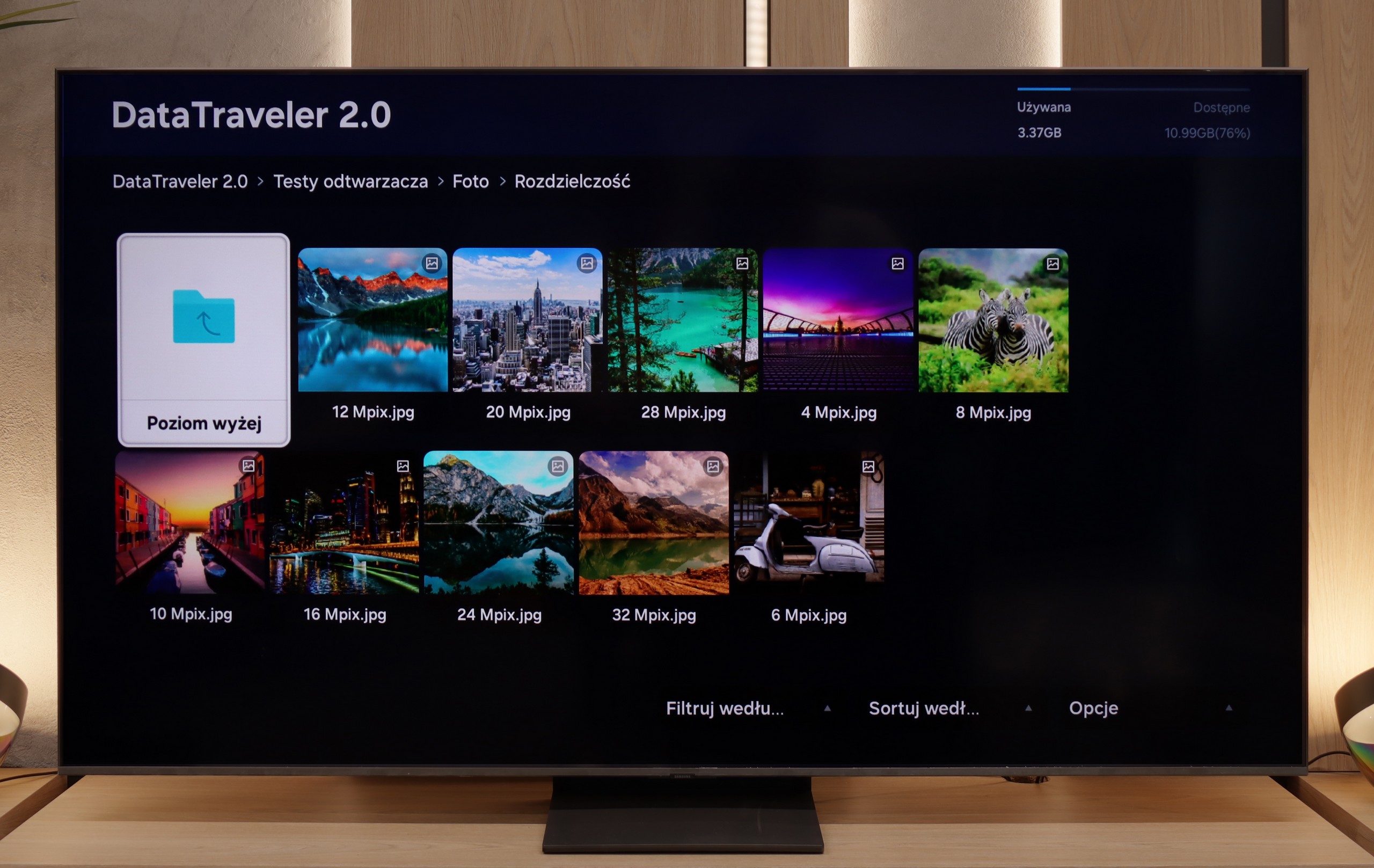

The built-in media player in the QN80F handles most popular video formats – from classic MP4 to more demanding containers. It may not be as versatile as VLC, but for home use, it’s more than sufficient. The situation is worse with photos – here, unfortunately, it’s quite limited. Support mainly includes the JPG format, but hey, at least that’s the most important one 👌. During our tests, there was also a minor issue with subtitles. The QN80F only handled the simple text format .txt – unfortunately, other, more advanced formats (like .srt or .sub) were not recognized.
The built-in media player in the Philips OLED770 works quite well, especially when it comes to subtitles – virtually every format we threw at it was handled correctly, which will certainly please those watching films from their own library. However, there are certain reservations regarding photo support. Not all resolutions are recognised, which may surprise users accustomed to viewing photographs from traditional cameras or older memory cards. Apart from that, everything works correctly – it’s just worth ensuring that the TV can handle the files that we actually want to play on it.
Apps
8.7/10
6.7/10














































Sound
6.7/10
7/10
- Maximum volume87dB80dB
- Dolby Digital Plus 7.1
- Dolby True HD 7.1
- Dolby Atmos in Dolby Digital Plus (JOC)
- Dolby Atmos in Dolby True HD
- DTS:X in DTS-HD MA
- DTS-HD Master Audio
For a TV of this class, the QN80F sounds surprisingly good. It supports the Dolby Atmos format, which is worth noting as this is still not obvious in many models in this range. Unlike the thinner QN70F, here you can even feel a slight bass – all thanks to the thicker casing, which simply provides more space for the sound to "breathe". It's perfectly adequate for everyday viewing and series, and with the right settings, you could even consider listening to music without the need to connect external equipment. But – as is the case with Samsung, there is unfortunately a lack of support for the DTS:X format, so if we are using audio devices that support this format, we will first need to connect them to the amplifier and only then to the TV.
When it comes to sound, the Philips OLED770 performs quite well, although you can't expect powerful bass. For regular TV viewing, streaming services or series, its capabilities are more than sufficient – dialogues are clear, and the overall tonal balance is at a decent level. However, when we want to feel a real punch in cinematic productions or games, it quickly becomes apparent that it lacks solid low-end response. In such a situation, a natural complement becomes an additional soundbar or audio system that will allow you to take advantage of the potential of the excellent picture.
On the plus side, versatility in handling formats must be noted. The OLED770 can manage practically all popular codecs, including Dolby Atmos, DTS:X, and Dolby TrueHD. Because of this, when connecting external audio equipment, you can expect a full sound experience, even if the built-in speakers in the TV don't make a spectacular impression.
Acoustic Measurements
87dBC (Max)
75dBC
80dBC (Max)
75dBC


